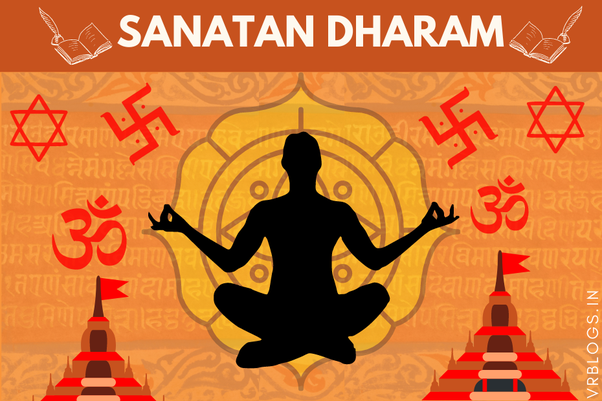Description

Disclaimer: Copyright infringement not intended.
Context
DMK leader and Tamil Nadu Minister Udhayanidhi Stalin’s statement, saying Sanatan Dharma is against social justice and should hence be eradicated, has led to political controversy.
Details
Controversy Surrounding Udhayanidhi Stalin's Statement
- A prominent leader of the Dravida Munnetra Kazhagam (DMK), made a statement that has sparked significant controversy. In his statement, he equated "Sanatan Dharma" with social injustice and called for its eradication.
- He explained that the term "Sanatan" implies something eternal and unchangeable. He argued that this very characteristic has led to divisions in society based on caste, suggesting that "Sanatan Dharma" perpetuates social inequalities.
The Roots of DMK in the Self-Respect Movement
- The Self-Respect Movement: The DMK, a prominent political party in Tamil Nadu, traces its ideological roots to the Self-Respect Movement initiated by EV Ramaswamy 'Periyar' in the early 20th century. This movement was characterized by a staunch anti-caste and anti-religion stance and aimed to bring about significant social reforms.
- Ideological Stance: Periyar was a vocal advocate for social reforms, particularly in addressing the deeply entrenched caste-based inequalities in society. His ideology emphasized rationalism and a rejection of orthodox religious practices.
- Formation of Dravidar Kazhagam (DK): In 1938, the Justice Party, of which Periyar was a member, merged with the Self-Respect Movement to create Dravidar Kazhagam (DK). The DK was known for its anti-Brahmin, anti-Congress, and anti-Aryan stance. It even called for the establishment of an independent Dravida nation, although this demand eventually lost momentum.
Periyar's Views on Hinduism and Caste
- Periyar's Critique of Hinduism: Periyar's criticism of Hindu religious practices was a central aspect of his ideology. He argued that Hinduism perpetuated caste-based discrimination and marginalization. He was particularly critical of practices that oppressed women and lower-caste individuals.
- Linking Religion to Caste: Periyar believed that the dominance of certain caste groups in Hindu society was closely tied to the existence of the religion itself. He saw religion as a tool of social power that privileged the Brahmins, perpetuating inequality.
- Advocacy for Eradicating Religion: One of Periyar's most radical propositions was the call for the eradication of religion altogether. He viewed religion as a hindrance to achieving true equality and liberty for women and lower castes.
- Political Influence: Periyar's ideology had a profound impact on the political landscape of Tamil Nadu. His views influenced leaders like M. Karunanidhi, who became prominent figures in the DMK. They continued to champion social justice and rationalism in their political careers.

Definition and Etymology of Sanatan Dharma
- Meaning and Translations: Sanatan Dharma is a Sanskrit term that can be interpreted in various ways, such as "eternal religion," "eternal law," "unshakeable, venerable order," or "ancient and continuing guideline." These translations reflect the multifaceted nature of the concept, emphasizing its enduring and foundational aspects.
- Roots in Sanskrit: The term "Sanatan Dharma" has its linguistic roots in Sanskrit, an ancient Indian language. This highlights its deep connection to the cultural and philosophical heritage of India.
- Bhagavad Gita Connection: In the Bhagavad Gita, a revered text in Hinduism, the term "Sanatan Dharma" gained prominence. It is in this context that the concept of "Sanatan Dharma" is linked with the eternal nature of the soul and the enduring principles of life.
Core Concepts of Sanatan Dharma
- Eternal Soul and Rebirth: A fundamental tenet of Sanatan Dharma is the belief in the eternal nature of the soul (Atman) and the concept of rebirth (reincarnation or samsara). It posits that the soul is immortal and undergoes a cycle of births and deaths until it achieves liberation (moksha).
- Inclusion in Multiple Traditions: Sanatan Dharma's core concepts are not limited to Hinduism but also extend to Jainism and Buddhism. These traditions share the belief in the eternal soul and the cycle of rebirth, making "Sanatan Dharma" a unifying concept among them.
- Exclusion of Other Religions: It's important to clarify that Sanatan Dharma is not applicable to religions like Judaism, Christianity, and Islam, which do not share the belief in reincarnation and the eternal soul. These religions have different theological perspectives and origins.
Emergence of Sanatan Dharma as a Term
- Late 19th-Century Prominence: The term "Sanatan Dharma" gained prominence in the late 19th century. This shift in usage and significance can be attributed to various historical and cultural factors of that time.
- Response to Reform Movements: The late 19th century saw the emergence of reform movements led by missionaries and social reformers like the Brahmo Samaj and Arya Samaj. In response to these movements, "Sanatan Dharma" began to be used as a symbol of Hindu orthodoxy.
Defenders of Sanatan Dharma
- Prominent Figures: During the late 19th century, figures like Pandit Shraddha Ram and Pandit Din Dayal Sharma played pivotal roles in defending traditional Hindu practices and beliefs. They advocated for the preservation of what they saw as the core values of Sanatan Dharma.
- Formation of Organizations: To safeguard and promote Sanatan Dharma, organizations such as 'Sanatan Dharm Sabha' and 'Bharat Dharma Mahamandal' were established. These organizations aimed to unite and mobilize supporters of orthodox Hinduism.
Use of "Sanatan-Dharmi" in Census
- Census Report of 1891: The term "sanatan-dharmi" found its way into historical documents, such as the Punjab Census Report of 1891. It was used to categorize individuals who adhered to orthodox Hindu practices and beliefs.
- Contrast with Arya Samaj: "Sanatan-dharmi" was often used in contrast to followers of the Arya Samaj, a reformist movement that advocated for changes in Hindu practices. This categorization underscored the divide between traditionalist and reformist Hindu groups during that period.
|
PRACTICE QUESTION
Q. What are the core concepts of 'Sanatan Dharma,' and how did it gain prominence in the late 19th century within the socio-religious context of colonial India?" (150 Words)
|

https://indianexpress.com/article/explained/explained-history/sanatan-dharm-meaning-history-8924036/















